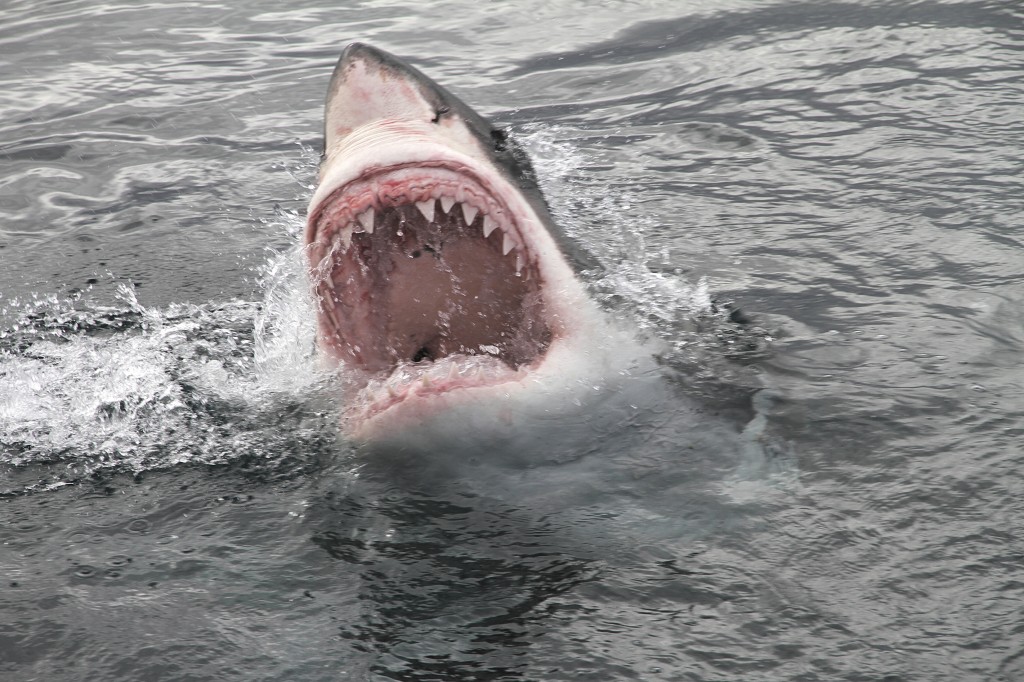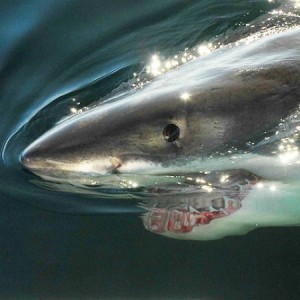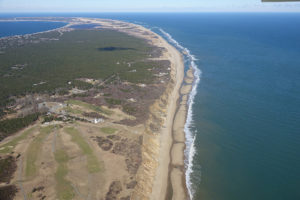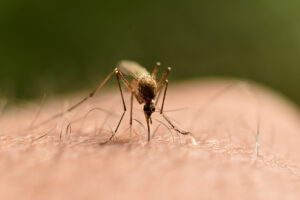 Over 100 years ago this very week, the coastal communities of the Jersey Shore were rocked by a series of deadly shark attacks. Over a twelve day span, a series of separate attacks claimed the lives of five unsuspecting victims and severely injured another. The attacks rocked not just these small seaside towns, but the American public and set the American public into a frenzied fear of sharks. Public fear and outrage lead to a decrease in beach going and an increase of shark hunts and scientific studies regarding shark’s behavior. This phenomenon resulted in some of the biggest pop culture crazes of the last century. The biggest of these being Peter Benchley’s novel Jaws, and its film adaptation, the 1975 blockbuster of the same name. And it all began on a quiet afternoon at a beautiful, peaceful beachside resort 100 years ago this month.
Over 100 years ago this very week, the coastal communities of the Jersey Shore were rocked by a series of deadly shark attacks. Over a twelve day span, a series of separate attacks claimed the lives of five unsuspecting victims and severely injured another. The attacks rocked not just these small seaside towns, but the American public and set the American public into a frenzied fear of sharks. Public fear and outrage lead to a decrease in beach going and an increase of shark hunts and scientific studies regarding shark’s behavior. This phenomenon resulted in some of the biggest pop culture crazes of the last century. The biggest of these being Peter Benchley’s novel Jaws, and its film adaptation, the 1975 blockbuster of the same name. And it all began on a quiet afternoon at a beautiful, peaceful beachside resort 100 years ago this month.
The Attacks
On July 1st, 1916, twenty-five year old Charles Vansant went for a late afternoon swim before dinner at the beachside Engleside Hotel. With his Chesapeake Bay Retriever at his side, he dove into the deep blue water, when his dog began to swim back—sensing trouble nearby. Charles ignored his dog’s apprehensions and continued swimming. On his way back to shore, in three and a half feet of water…it struck. Beachgoers looked as a massive triangular shaped animal bit down on Vansant’s leg. Beachgoers jumped into action. The lifeguard, Alexander Ott, engaging in a vicious tug-of-war game with an unidentifiable sea monster. Vansant was pulled ashore and bled to death on the desk of the hotel by quarter of seven that night.
At this moment in time, many people were unaware of what a shark actually looked like. They had only heard about them in sailor stories. Hence, why the beachgoers that afternoon couldn’t believe their eyes at whatever monster came out of the water. Some thought it to be a whale, others a pack of sea turtles, or even a large game fish. Either way—it was a terrifying monster.
Despite the attack at the Engleside beach, the beaches of New Jersey stayed open. Beach going being a relatively new form of summer entertainment made the coastal communities of the eastern seaboard thrive economically during the summer months. Closing down would have been financial suicide. The warnings of local sea captains and fisherman who had spotted sharks recently along the coast, had no bearing on the beachgoers and town officials. Besides, there had never been a shark attack on American soil before. To the beach goers of the Jersey shore, or anywhere in the country for that matter, Vansant’s killer could have been a giant squid or a whale. To the beach goers, a shark meant nothing.
On July 6th, Swiss born Charles Bruder, a bell hop at the Essex and Sussex Hotel, located just about forty miles north of the Engleside, went out for a swim. About a few hundred feet from the shore, with plenty of eye witnesses on the beach, Bruder was attacked in the abdomen by a massive gray animal. After attacking Bruder’s abdomen it went right for his legs, turning the blue water purple with his red blood. Witnesses on the beach thought it was a canoe that had overturned, but the lifeguards knew something else was at play. They rowed out to him and pulled Bruder out of the water only to discover that the bottom half of his body was completely gone. Bruder bled to death by the time the lifeboat arrived at the shore. As his remains were laid on the sand, people screamed, and some eyewitnesses recall women fainting.
With two attacks in under a week, scientists knew that this was no ordinary fish they were dealing with. Dr. William G. Shauffler, a leading marine scientist believed that a shark was the culprit of both attacks and with the help of local fisherman launched a search and kill mission to end this killer shark once and for all.
The party searched exclusively for the shark along the New Jersey coastline, never dreaming for a minute, it would be anywhere else. A few days later on July 12th, a local fisherman spotted a shark in Matawan Creek, a freshwater creek 15 miles inland. His report was immediately dismissed as preposterous. How could a shark be in no more than two feet of fresh water? But later that afternoon, a group of local boys were playing around the creek. Neither of them had heard the sea captain’s warning. At once, they saw a big gray figure that they assumed was a log. It wasn’t until a dorsal fin appeared that it became clear they were in the presence of a shark. They immediately ran out of the water, but for eleven year old Lester Stilwell, it was too late. The shark pulled him underwater and never brought him back up. The boys ran into town and alerted the townspeople.
 Just like with Charles Bruder, a search party swept Matawan Creek within minutes to find this horrendous creature. A steel net was placed at the end of the creek to prevent the shark from escaping. One of the search party members, Stanley Fisher, eventually found the body, but as soon as he did, he himself was dragged under water. He managed to escape and was pulled from the water with his right leg missing. He died at the hospital that night at 8:30pm, of blood loss and shock.
Just like with Charles Bruder, a search party swept Matawan Creek within minutes to find this horrendous creature. A steel net was placed at the end of the creek to prevent the shark from escaping. One of the search party members, Stanley Fisher, eventually found the body, but as soon as he did, he himself was dragged under water. He managed to escape and was pulled from the water with his right leg missing. He died at the hospital that night at 8:30pm, of blood loss and shock.
Earlier that afternoon, the fifth and final victim, Joseph Dunn and his brother, Michael were swimming in the creek, unaware of the warnings and attacks from earlier in the day. When they were finally warned by passersby, they started to swim to shore when suddenly, a shark tried to pull Joseph under water. His brother managed to pull him out, and fortunately for Joseph, the shark had not bit down on any arteries or crushed any bones. By the end of August 1916, Dunn had made a full recovery. The only survivor of a series of killer shark attacks.
The search parties for the shark continued throughout the summer of 1916, but yielded nothing but a broken steel net. The steel net placed to trap the killer shark was taken out of the water with a massive hole in the middle. Something had torn through the steel wires and made its way back to the ocean—swimming around, waiting for the next victim.
Legacy
Until 1916, shark attacks had not been considered a possibility, or any real threat—they were merely a fabrication of sailors and fisherman, akin to Melville’s Moby Dick or the Kraken, from Viking mythology. All of a sudden, the American public’s anxiety about shark attacks grew greater. To prevent further attacks, fishermen began to hunt sharks down and drastically reduce their populations. Bounties were put on sharks, especially after a shark containing fifteen pounds of human remains was found by Michael Schleisser, a fisherman and lion tamer with Ringling Brothers. Immediately reporters thought this particular shark to be the exact one responsible for the 1916 attacks—but this is highly unlikely. Recent scientific research proves that shark attacks sprees are rarely, if not ever, done by one shark, contrary to the popular “rogue shark” theory which says that a shark acquires a taste for human flesh after consuming its first human meal.
Public fear of sharks was only exacerbated by the publication of Peter Benchley’s Jaws and the release of the Steven Spielberg directed film of the same name. The American public was now even more fearful of the possibility of shark attacks and once again coastal communities suffered. Each and every year as people are bombarded with news stories about shark sightings in some picturesque coastal community, more and more sharks are killed by commercial fisherman than humans are by sharks. In fact, current research states that the odds of being struck by lightning and being hit on the head and killed by a coconut are higher than being fatally attacked by a shark. If it were not for the 1916 Jersey Shore shark attacks, perhaps the American public would have had to wait longer for the vital information we now know about sharks. It was a turning point in the study and perception of sharks in American life and at its centennial, it is very important to reflect and think about the attacks in a historical, scientific, and ultimately cultural context.

























Interesting and nicely written, Christian.